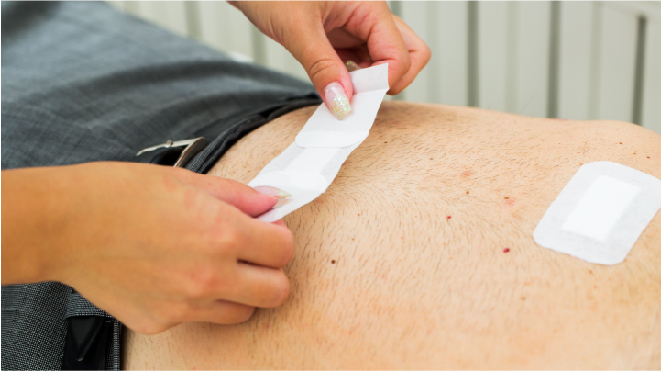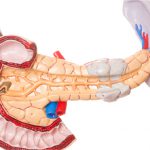Gallbladder cancer as the name suggests, begins in the gallbladder, an organ that stores a substance called bile. To read about gallbladder and gallbladder cancer, click here
Surgery for gallbladder cancer:
Surgical procedures for treating gallbladder cancer can be broadly categorized into two types: potentially curative surgery and palliative surgery. Potentially curative surgeries are for resectable cancers, that is for the cancers which can be completely removed by the surgical procedures while, palliative surgeries are used for metastasized cancers for which surgical methods alone cannot eliminate the cancer from the body.
Before performing the surgery, staging laparoscopy is done to get a closer look at cancer and it’s affected areas. This procedure is carried out by making small incisions near the abdomen and inserting a thin, long tube which is attached to a camera. The doctors will see have an inner view of the gallbladder and the surrounding organs through the camera that is inserted.
Types of surgery for resectable gallbladder cancer:
Depending on the diagnostic results of the patient, the doctor will decide the best surgical procedure for patients. Following are the surgical procedure used for treating gallbladder cancer:
Cholecystectomy:
The procedure of removing the gallbladder is known as cholecystectomy. This surgery is used for removing both the gallstones or the gallbladder. Gallbladder cancer surgeries might be a part during the treatment of other diseases also. If the cancer is detected in the early stages, cholecystectomy alone eliminates the cancer from the body. Incase, the cancer is diagnosed in the advanced stages, more complicated surgeries are required. Cholecystectomy can be performed in the following two ways:
Laparoscopic cholecystectomy:
This treatment is the most recommended one for removing non-cancerous tumours or the gallbladder. The procedure is carried out with the surgeon making small incisions in the abdomen and putting a laparoscope to get an inner view of the gallbladder. Long surgical tools are then used to remove the gallbladder through the incisions. The surgeons observe their accuracy with the help of the video camera attached to the laparoscope. This procedure seems easier to the patients due to the smaller incision size, but it is not recommended if cancer is suspected/detected because this treatment has a very small range of view of the gallbladder which can lead to a lot of cancerous regions being left in the body.
Open cholecystectomy:
This treatment is often used for non-cancerous gallbladder problems which leads in detecting the cancer. The procedure is carried out by the surgeon making a large incision along the abdominal wall, through which the gallbladder is removed. If the cancer is suspected to have spread beyond the gallbladder, extended cholecystectomy is done.
Extended (radical) cholecystectomy:
This procedure is used to treat gallbladder cancer. It includes the removal of the gallbladder through the incisions that the surgeons make along the abdominal wall. Since the risk of recurrent gallbladder cancer is high, an extensive and a complicated surgery is done to avoid the recurrence.
The patients who are recommended extended cholecystectomy as a part of the treatment to cure gallbladder cancer will experience a removal of the lymph nodes in the region and one or more inches of the nearby tissues of the liver along with the resection of the gallbladder. Depending on the tolerance levels of the patient and the spreading of the cancer, the doctors shall decide which extra parts to be removed. The following are the parts that are generally removed in extended cholecystectomy:
- Part of the liver, a wedge-shaped section close to the gallbladder (wedge resection) or a whole lobe of the liver (hepatic lobectomy)
- Part or all of the ligament that runs between the liver and the intestines A portion or all of the ligament between the liver and the pancreas
- Lymph nodes around the pancreas and the major nearby blood vessels
Surgery for unresectable gallbladder cancer:
Unresectable gallbladder cancers are those which cannot be completely removed by surgeries. It is mostly used for metastasized gallbladder cancer. Palliative surgery is used for treating unresectable gallbladder cancers. It does not aim in eliminating the cancer, but at relieving the patients from the pain and symptoms that the cancer causes.
Biliary stent or a catheter:
Due to blockage caused by cancer, if bile cannot move from the gallbladder or the liver into the small intestine, the buildup of bile can cause jaundice. A stent or a catheter may be placed through the blockage to allow the movement of bile.
Biliary bypass:
Depending on where the tumour is, a bypass can be creating through surgery to remove the blockage to allow bile to drain from the liver and the gallbladder. A bypass lasts longer than a stent or a catheter but the patient has to be healthy enough to withstand the procedure.
Alcohol injection:
The doctors may deaden the nerves that carry pain signals from the gallbladder and the intestinal area to the brain by giving alcohol injections, this can be done during a surgery or as a separate procedure through CT scan.
Side effects of surgery for gallbladder cancer:
Though surgery is the preferred course of treatment for gallbladder cancer, it has its side effects too. Read about the side effects of radiotherapy for gallbladder cancer here
Outlook:
Surgeries show successful results in treating early stages of gallbladder cancer. These procedures are required for almost all types and stages of gallbladder cancer. They aim at removing the gallbladder, gallstones and tumours along with the affected lymph nodes.
For advanced stages of the cancer or recurrent gallbladder cancer, surgeries are a part of the treatment which can includes other treatments too. Read about the follow up of gallbladder cancer treatment here




